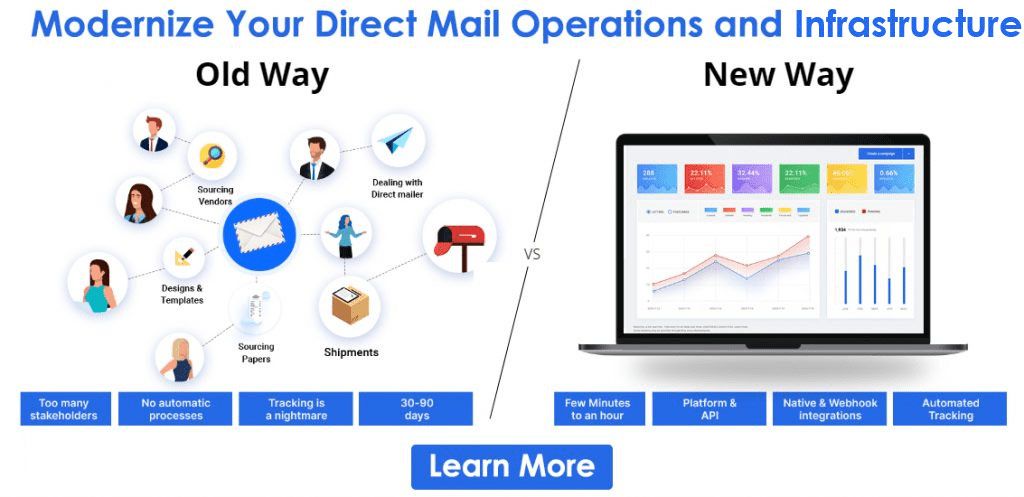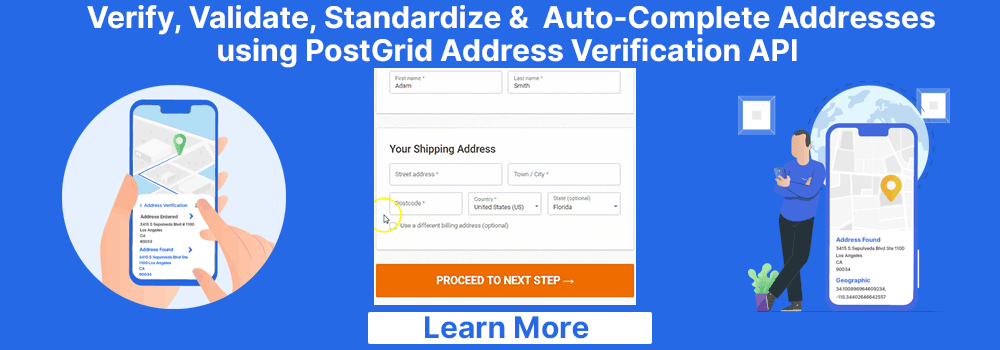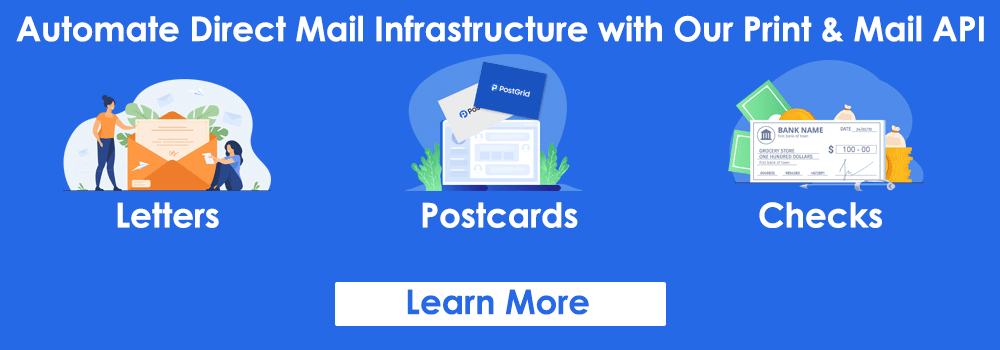Location-based Marketing
How to Conduct Successful, Lawful, and Result-Driving Location-Based Marketing?
Nearly 290 million Americans use a smartphone regularly! It proves that marketers can benefit majorly by targeting customers via mobile phones.
However, mobile marketing is just a type of personalized, location-based marketing. With such massive smartphone usage, location plays a huge role in data compilation and targeted advertising.

Businesses can use their prospects’ location details to send them more relevant offers and connect with them at the right time. Such information enables them to drive sales and increase brand visibility.
Yet, not every company knows how to use location-based marketing effectively. This blog highlights its significance, advantages, and disadvantages. We will also discuss some productive ways in which you can improve your campaigns.
Let’s get started!
What is Location-Based Marketing?
Location-specific marketing allows companies to target their prospects personally through online and offline marketing channels using their physical location. This way, marketing teams can reach their existing and potential customers based on factors, like local events, proximity to their offline stores, etc.
For example, geolocation-based marketing helps you know when a prospect is visiting your store, so you can send real-time updates and offers to induce sales. It allows you to narrow down specific segments and improve customer experience by providing personalized messages.
Moreover, a survey showed that 83% of marketers conducted more successful campaigns using location data. Therefore, location-based marketing helps increase ROI and generate better engagement levels.
 Also Read: What are Geocodes and How Do They Work?
Also Read: What are Geocodes and How Do They Work?These targeted marketing strategies can help you understand your customers’ needs and improve customer-company relationships. Hence, it is a win-win for you and your customers both. Of course, you can only access privacy-compliant, opted-in data to respect your customers’ data privacy and avoid violating any laws.
Types of Location-Based Marketing
Today, everything is linked to the internet- watches, cars, phones, etc. These devices constantly track their users’ location, making spatial data largely available. This information allows marketers to reach customers and persuade them to buy from their brand.
There are several types of location-based marketing that companies can employ, depending on their customer profile, like:
Geofencing
Geofencing is a geolocation-based marketing type that creates a boundary around a specific location or location. It could be a fashion retail outlet, supermarket, hospital, or other business location.
The purpose is to identify the audiences visiting these locations and send them real-time content, messages, offers, or notifications. Once a person enters the boundary line, they are treated as an active target.
Geofencing is done using any of these two ways: polygons and radii. The radii approach creates a circle around the place of interest and captures the details of the visitors. But, there is a downside to this location-based marketing approach- it cannot distinguish between passersby and actual visitors. Thus, most companies use polygons to outline the exact building shape to get more precise details.
But how to do location-based marketing using geofencing? Geofencing uses GPS technology to create location outlines, which is why it is also called GPS marketing. As soon as a prospect walks inside this outline, they receive a notification or personalized message.
There are several advantages that geofencing location-based marketing provides, such as:
- It allows companies to cover huge spaces, like malls, exhibition halls, etc.
- Geofencing uses real-time data enabling marketing to act at the right time and divert customers to their stores.
- It lets them drive instant sales by targeting people right outside the store or in other specific business areas.
Geotargeting
Geotargeting is also a form of geolocation-based marketing wherein companies create audiences based on their visits to specific real-world places of interest. For example, a person visiting a yoga center can be a yoga mat user. Or, a person visiting a coffee shop is a coffee drinker.
Geotargeting location-based marketing helps businesses determine whether a person is a potential customer through their location. They can send push notifications or other messages if the prospects have allowed their website or app to access the location details.
This method utilizes IP addresses to find where a company’s prospects are located. Marketers can match IP addresses with a specific city, state, or ZIP code to capture details of all the visitors.
Let us take the example of Google search results to discuss geotargeting better. When a person enters ‘restaurants around me,’ Google uses geotargeting location-based marketing to show them all the restaurants in the vicinity.
Geo-conquesting
Geo-conquesting is the most effective geolocation-based marketing type allowing you to leave your competitors behind and win over their customers. It enables you to record details of all the people visiting your competitor and then encourage them to visit you instead.
The prime purpose of such strategies around local and location-based marketing is to offer something to customers and divert them away from your competitors. It can be a discount coupon, cashback offer, free sample, etc. But, make sure to offer something that your competitor is not already providing.
Like geofencing, geo-conquesting also uses GPS technology to connect with customers when they are close to your competitor’s location.
The benefits of geo-conquesting location-based marketing include:
- You can expand your database and push prospects ahead of their sales funnel.
- You can encourage new users to stop looking around and buy from your brand.
- Geo-conquesting also helps customers navigate and reach your nearby store.
One of the best geo-conquesting location-based marketing examples is the world-famous fast-food chain, Burger King. In 2018, Burger King started a campaign wherein it gave its whoppers at only 1 cent each. The objective of this campaign was to divert customers away from McDonald’s and push up sales.
Beaconing
Beacons are small high-tech devices that use WiFi or Bluetooth to connect with applications operating within their range. You need three things for beacons to work:
- A beacon device
- A smartphone or other device with your application installed on it
- Your users’ consent
The beaconing technology helps marketers conduct location marketing by sending users a personalized message. For example, stadiums set up beacons to send a link to all the attendees to download tickets for upcoming matches. Or, a grocery store uses beacons to send discount coupons to a person visiting the frozen foods aisle.
Remember, the person should be within the beacon’s range for this location-based marketing technology to work. Plus, users must be opted-in and have WiFi or Bluetooth for the beacon to connect with their devices.
Some marketers think that this type of location-based marketing is ineffective. But, it is an excellent option for companies to target their existing customers and drive repeat business.
Beaconing also has other advantages, like:
- Businesses can track users in an indoor space to offer relevant deals and improve customer experience.
- Users need not be online on the application to receive notifications.
Mobile Targeting
Mobile targeting is the process of connecting with users via sending them ads on their phones. Though most mobile targeting campaigns are generic, you can add a spin to them by using location data.
Marketers planning to conduct location-based mobile advertising should use context-specific and personalized ads. Otherwise, users can get distracted and ignore such ads. Also, try dividing your mobile ad platform into different segments to define your target audience and create qualifiers, like:
- When users enter a specific location.
- When users are visiting someplace nearby your store.
Thus, mobile marketing is seldom treated as an individual location-based marketing type as it uses geofencing or geotargeting.
Social media ads are an excellent example of mobile targeting as they use spatial data to encourage users to visit a nearby store, event, etc.
Reasons to Include Location-Based Marketing in Your Media Mix
If you are unsure whether to use geotargeting advertising, the following reasons to use it will change your mind:
Increase Brand Visibility
Often, a person visiting a location is unaware that your store is located nearby. However, sending real-time notifications using geotargeting helps them know your address, increasing brand awareness.
Also, location-based marketing helps you reach every visitor in an area personally. It enables you to develop relationships with them and drive more conversions.
 Also Read: PostGrid for Marketing Teams
Also Read: PostGrid for Marketing TeamsReduce Marketing Expenditures
Generic advertising is way more expensive than geolocation marketing as you need to conduct large-volume generic marketing campaigns before you can see positive results. On the other hand, location-based marketing lets you target relevant prospects more likely to buy from you.
This way, you can channel your marketing efforts and expenses in the right direction and get an improved ROI.
Increase Event Footfall
In exhibitions, companies deploy several methods to catch their audience’s attention, like using large standees and distributing pamphlets. Similarly, they can use geotargeting and beaconing to increase footfall to their booths.
Such location-based marketing helps businesses take full advantage of their participation and reach out to every visitor. Along with increasing footfall, they can also generate instant sales by sending discount offers to their prospects’ mobile devices.
Also, companies can use the same tactic to increase sales at their brick-and-mortar stores. The key is to get customers to walk in and avail themselves of great deals.
Create Better Customer Experience
80% of customers are more likely to buy from a brand that offers personalized experiences. Thus, personalization can help you tailor your solutions according to the customers’ needs at every stage of their journey.
You can create segmented audiences and connect with them via personalized offers. And the best way to achieve such objectives is by conducting geolocation-based marketing campaigns!
Advantages and Disadvantages of Location-Based Marketing
Every marketing channel and method has its pros and cons that marketing teams should consider before making any decisions. Hence, we have listed some advantages and disadvantages of location-targeted advertising to help you out:
Advantages:
- Enhanced targeting: Location-based marketing helps you target audiences based on several factors, like weather, shopping patterns, the time of the day, etc. It helps take your targeted marketing campaigns ahead and fine-tune your messaging for the best results
- Data segmentation: Another key benefit is that companies can segment their database accurately using the insights they collect into the customers’ shopping behavior. You can note down details, like how people react to your location-based offers and which demographics are the most likely to buy your products
- Cost-per-visit advertising: Location-based mobile marketing enables marketers to optimize their marketing spending effectively. They can use the CPV metric and pay only for the customers that visit their stores after getting a location-specific ad
- Customer journey-relevant messaging: There are wide applications of location-based marketing, making it simple for marketers to target all types of customers. They can send personalized messages to customers across various cycles- discovery, engagement, purchase, and retention. For example, you can use geofencing to generate new leads and beaconing to engage with existing customers
Disadvantages:
- Opt-in Requirements: Marketers can conduct location-based marketing only when users allow websites and apps to access their data. Another requirement is that users must have their location enabled on their devices for that data to be accessible. Since many people refrain from sharing their location details due to privacy concerns, it may be hard to connect with them
- Inaccurate targeting: Sometimes, users have a permanent VPN operating on their devices that blocks them from accessing their physical location, impacting geolocation marketing negatively
Privacy Issues in Location-Based Marketing
Many companies are worried about data privacy while using location data. Moreover, there is also a risk of cyber attacks and possible data breaches. Such issues harm both the company and its customers significantly.
Thus, you must ensure that you only use opted-in location data wherein users can opt out from sharing their details at any time. Also, you can anonymize data to reduce such concerns by not attaching behavioral patterns and preferences with individual names. You may also take further precautions by employing the essential cybersecurity protocols.
Apart from these practices, ensure that you follow all the laws related to location-based marketing. Some regulations may restrict you from sending personalized offers while others may block you from collecting sensitive details.
 Also Read: PostGrid for Compliance Teams
Also Read: PostGrid for Compliance TeamsLuckily, 65% of customers are willing to share personal information with businesses to get personalized shopping experiences. Hence, you can still use location marketing to increase conversions by lawfully handling your operations.
Tips to Conduct Successful Geolocation-based Marketing Campaigns
Below are some tips and tricks for conducting result-bearing and effective location-based marketing campaigns:
Start Small
If you are new to location-specific advertising, it is advisable to start with geotargeting tools that Facebook and Google offer. They can help you locate prospects in specific areas and run digital marketing campaigns to convert them.
Once you get the hang of location-based marketing, you can shift to more sophisticated tools with advanced options. Some providers offer customization options to help you create more accurate audiences and integrate campaigns into your digital ecosystem.
Discuss Privacy Concerns Beforehand
There are several data protection laws that restrict marketers from using specific location details. Try educating yourself about such laws and clearing up any privacy issues well in advance.
Define Marketing Motives
Having well-defined motives and KPIs help you measure your campaign success more precisely. Try establishing goals with your entire sales and marketing teams before planning any tactics. Some of the common examples of location-based marketing objectives are:
- Sending real-time alerts to in-store visitors
- Informing people of your newly-opened franchise in their neighborhood
- Targeting customer look-alikes and pushing them ahead of their customer journey, etc.
Choose a Location Marketing Type that Suits your Needs
As discussed earlier, marketers have several options to deploy location-based marketing. Hence, they should consider their exact requirements and choose from geotargeting, geo-conquesting, and other types to optimize their campaigns.
Test Your Activities and Measure Performance
Always test your campaigns to see if they are working in your favor. Also, you can mix and match some activities like using beaconing and geotargeting together to generate a better ROI.
Use Different Marketing Channels
Almost all companies use digital marketing to back up their geolocation-based marketing efforts. For example, they may run location-relevant social media campaigns or send online notifications.
Most marketers think that it is the only way of using location data. But, they can also conduct direct mail campaigns using the location details of prospects. It helps them compile highly targeted mailing lists and connect with their audiences individually.
 Also Read: Best Direct Mail Marketing Companies
Also Read: Best Direct Mail Marketing CompaniesLocation-Based Marketing Examples
There are hundreds of use cases of location-based marketing as more and more companies have started using it regularly. Here, we have discussed some examples to give you a glimpse.
Example #1: No Kid Hungry
No Kid Hungry works towards ending childhood hunger by running year-round fundraising campaigns. It has tied up with several restaurants that conduct geotargeting marketing campaigns to persuade passersby to dine with them and donate to the cause.
Example #2: Whole Foods
Whole Foods’ location-based marketing uses geo-conquesting and geofencing to increase sales. The supermarket sends special discount offers to customers shopping at nearby grocery stores.
It also sent these offers to existing customers to enhance their shopping experience and increase retention rates.
Undoubtedly, almost all industries can leverage geolocation-based marketing, including:
- Home services
- Nonprofit organizations
- Realtors
- Contractors
- Churches
- Financial services
- Healthcare professionals
- Restaurants
- Retail stores, etc.
However, not all businesses cannot benefit from location-based marketing. For example, stores located in hotels or buildings cannot use location marketing. If they do, they might end up sending notifications and ads to irrelevant people risking their brand reputation.
Another instance can be of stores situated on streets having minimal foot traffic. In this case, they cannot reach out to many people using location-based advertising tactics.
Also, location-based marketing may not be a good fit for companies manufacturing or selling items that are available everywhere, like milk, toothpaste, etc. These products are also available at the same rates at all places, limiting sellers to leverage place-based marketing.
How Can PostGrid Enhance Your Location-Based Marketing Plans?
PostGrid helps you create, print, and distribute several types of marketing items, including postcards and flyers. Apart from that, our direct mail API offers a host of features to aid your local and location-based marketing campaigns, like:
- Mailing list compilation: PostGrid helps you create targeted mailing lists based on several factors such as location, age, gender, income, etc. Thus, you can enhance your campaigns even further and only target highly-relevant prospects
- Address verification: Are you worried about having incorrect delivery addresses? PostGrid’s address verification solutions can cleanse your entire database within minutes
- Triggered mailing: PostGrid’s direct mail automation software can help you conduct campaigns triggered by customer actions. You can determine these actions based on your needs, like customers visiting your website or downloading your catalog
- Campaign insights: Another prime feature that PostGrid offers is access to periodic, timely reports. Thus, you can evaluate the performance of your geolocation-based marketing campaigns and use the insights as a reference in the future
Request a demo now to find out how PostGrid can help you increase your ROI through effective location-based marketing!
Ready to Get Started?
Start transforming and automating your offline communications with PostGrid
The post Location-based Marketing appeared first on PostGrid.
source https://www.postgrid.com/location-based-marketing/




Comments
Post a Comment